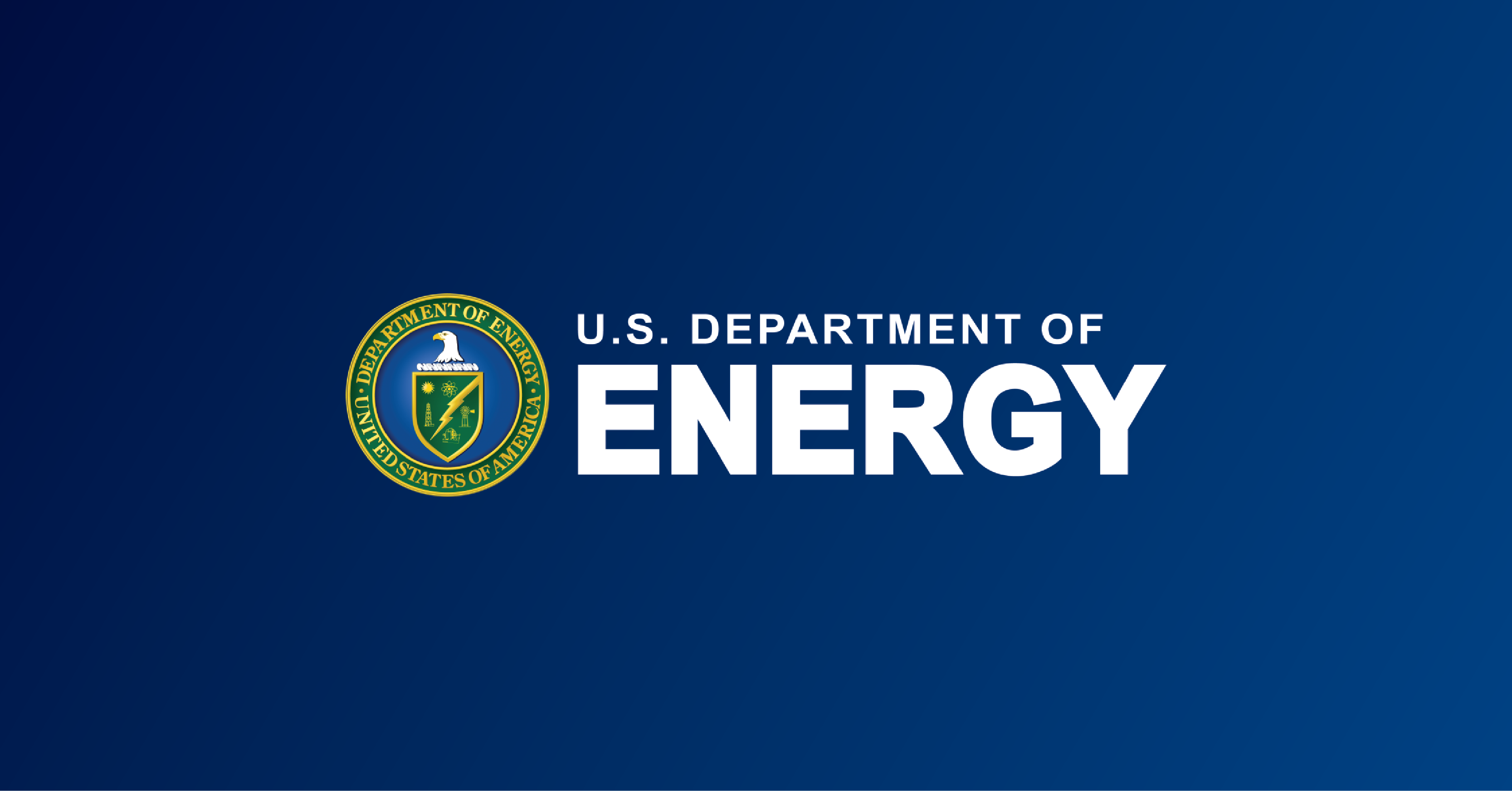DOE Announces $46 Million to Boost Energy Efficiency and Slash Emissions in Residential and Commercial Buildings
DOE Announces $46 Million to Boost Energy Efficiency and Slash ... Energy.gov


U.S. Department of Energy Announces $46 Million Funding for Advanced Building Technologies

In support of President Biden’s Investing in America agenda, the U.S. Department of Energy (DOE) has announced $46 million in funding for 29 projects across 15 states. The aim of these projects is to develop advanced building technologies and retrofit practices that enable healthier households and communities while reducing energy waste. The funding opportunity, known as Buildings Energy Efficiency Frontiers and Innovation Technologies (BENEFIT), will help advance cost-effective solutions to electrify buildings nationwide, improve energy efficiency, and enhance demand flexibility. These projects align with the Sustainable Development Goals (SDGs) by significantly reducing greenhouse gas emissions, eliminating unnecessary energy consumption, and reducing strain on the electric grid.
Building a Clean Energy Future
The funding provided by DOE will support the exploration of new ways to build and operate buildings in the United States, with the goal of cutting harmful emissions and combating the climate crisis. U.S. Secretary of Energy Jennifer M. Granholm emphasized the importance of this funding in transforming innovative ideas into practical solutions that create safer and healthier homes and buildings while reducing energy costs.
Tackling Energy Consumption and Emissions
Residential and commercial buildings are the largest energy-consuming sector in the U.S. economy, responsible for approximately 40% of the nation’s energy consumption, 74% of its electricity use, and 35% of its total carbon emissions. It is estimated that one-third or more of the energy used by buildings is wasted, resulting in an annual cost of $150 billion. To address this issue, it is crucial to utilize existing technologies and develop new innovations that improve energy efficiency and decarbonize on-site processes. These efforts align with SDG 7 (Affordable and Clean Energy) and SDG 13 (Climate Action).
Advancing Innovative Technologies
DOE’s selected projects will focus on improving space conditioning and water heating, which account for over half of all energy use in American homes. The remaining projects will target other components impacting homes and commercial buildings. By driving innovations in these areas, DOE aims to reduce the energy intensity and related carbon emissions of buildings. This aligns with SDG 9 (Industry, Innovation, and Infrastructure) and SDG 11 (Sustainable Cities and Communities).
Ensuring Environmental and Energy Justice
The selected projects will contribute to environmental and energy justice priorities by advancing breakthrough technologies that increase building resiliency while mitigating local pollution. This supports the President’s plan to combat the climate crisis and build a clean energy future that benefits all Americans. These efforts align with SDG 10 (Reduced Inequalities).
Conclusion
The U.S. Department of Energy’s funding for advanced building technologies underscores its commitment to achieving the SDGs and transitioning America to a net-zero greenhouse gas emissions economy by 2050. By supporting cost-effective solutions, DOE is driving innovation in the building sector to improve energy efficiency, reduce emissions, and create a more sustainable future. For more information on the selected projects, please visit the
SDGs, Targets, and Indicators Analysis
1. Which SDGs are addressed or connected to the issues highlighted in the article?
- SDG 7: Affordable and Clean Energy
- SDG 9: Industry, Innovation, and Infrastructure
- SDG 11: Sustainable Cities and Communities
- SDG 13: Climate Action
The article discusses the U.S. Department of Energy’s funding for projects that aim to develop advanced building technologies and retrofit practices to reduce energy waste and improve energy efficiency in buildings. These efforts align with the goals of SDG 7, which focuses on ensuring access to affordable, reliable, sustainable, and modern energy for all. Additionally, the projects contribute to SDG 9 by promoting innovation in building technologies and infrastructure. They also support SDG 11 by working towards sustainable cities and communities through the improvement of buildings’ energy efficiency. Lastly, the projects contribute to SDG 13 by reducing greenhouse gas emissions and combating climate change.
2. What specific targets under those SDGs can be identified based on the article’s content?
- Target 7.3: By 2030, double the global rate of improvement in energy efficiency
- Target 9.4: By 2030, upgrade infrastructure and retrofit industries to make them sustainable
- Target 11.6: By 2030, reduce the adverse per capita environmental impact of cities
- Target 13.2: Integrate climate change measures into national policies, strategies, and planning
The projects funded by the U.S. Department of Energy aim to improve energy efficiency in buildings, which directly contributes to Target 7.3 of SDG 7. By developing advanced building technologies and retrofit practices, the projects also align with Target 9.4 of SDG 9, which focuses on upgrading infrastructure and making it sustainable. The efforts to reduce energy waste and improve energy efficiency in buildings contribute to Target 11.6 of SDG 11, which aims to reduce the adverse environmental impact of cities. Lastly, by reducing greenhouse gas emissions and promoting energy efficiency, the projects support Target 13.2 of SDG 13, which emphasizes the integration of climate change measures into national policies and planning.
3. Are there any indicators mentioned or implied in the article that can be used to measure progress towards the identified targets?
- Energy consumption reduction in buildings
- Reduction in carbon emissions from buildings
- Increased adoption of energy-efficient building technologies
- Improved energy efficiency ratings of buildings
The article mentions that residential and commercial buildings are responsible for a significant portion of energy consumption and carbon emissions in the U.S. By measuring the reduction in energy consumption and carbon emissions from buildings, progress towards the targets can be assessed. Additionally, the increased adoption of energy-efficient building technologies and improvements in energy efficiency ratings of buildings can serve as indicators of progress.
SDGs, Targets, and Indicators Table
| SDGs | Targets | Indicators |
|---|---|---|
| SDG 7: Affordable and Clean Energy | Target 7.3: By 2030, double the global rate of improvement in energy efficiency | – Energy consumption reduction in buildings – Increased adoption of energy-efficient building technologies |
| SDG 9: Industry, Innovation, and Infrastructure | Target 9.4: By 2030, upgrade infrastructure and retrofit industries to make them sustainable | – Reduction in carbon emissions from buildings – Improved energy efficiency ratings of buildings |
| SDG 11: Sustainable Cities and Communities | Target 11.6: By 2030, reduce the adverse per capita environmental impact of cities | – Energy consumption reduction in buildings – Increased adoption of energy-efficient building technologies |
| SDG 13: Climate Action | Target 13.2: Integrate climate change measures into national policies, strategies, and planning | – Reduction in carbon emissions from buildings – Improved energy efficiency ratings of buildings |
Behold! This splendid article springs forth from the wellspring of knowledge, shaped by a wondrous proprietary AI technology that delved into a vast ocean of data, illuminating the path towards the Sustainable Development Goals. Remember that all rights are reserved by SDG Investors LLC, empowering us to champion progress together.
Source: energy.gov

Join us, as fellow seekers of change, on a transformative journey at https://sdgtalks.ai/welcome, where you can become a member and actively contribute to shaping a brighter future.







